Okikazu Maeshiro is stationed at a loom in his family’s atelier in Motobu, a district overlooking the East China Sea on the western coast of Okinawa’s main island. The region’s notably humid climate is favored by the indigo plants used in Ryūkyū-ai dyeing, and Motobu, dotted with fields where these species thrive, is Okinawa’s indigo heartland.
With a deft precision honed over his years of devotion to the art of kasuri weaving, Maeshiro finesses the threads that he has painstakingly colored with Ryūkyū-ai indigo through resist-dyeing, a technique that leaves adjacent sections uncolored. Passing these threads through the manually operated loom, patterns emerge in the resulting cloth: stripes, geometric shapes, and motifs inspired by the natural world. Together they are a paean to the blue seas and skies around Okinawa.
Maeshiro’s family ties to the craft run deep— post-World War II, his paternal grandfather, Kōsei Maeshiro, was an important figure in the revival of Ryūkyū indigo dyeing and kasuri weaving, together known as senshoku. In addition to honoring traditional Ryūkyūan patterns, Maeshiro’s grandfather devised his own original designs, referring to them as “Ryūkyū bigasuri” to distinguish his creations from the kasuri weavings of others.
Yet the intricacies of the form were a mystery to Maeshiro as he was growing up. “From the moment I became aware of my surroundings, my father would be indigo dyeing while my mother was weaving,” he says. “But as a child, I wasn’t permitted to enter the atelier due to the delicacy of the threads hanging there, so I didn’t fully understand our household’s work.”

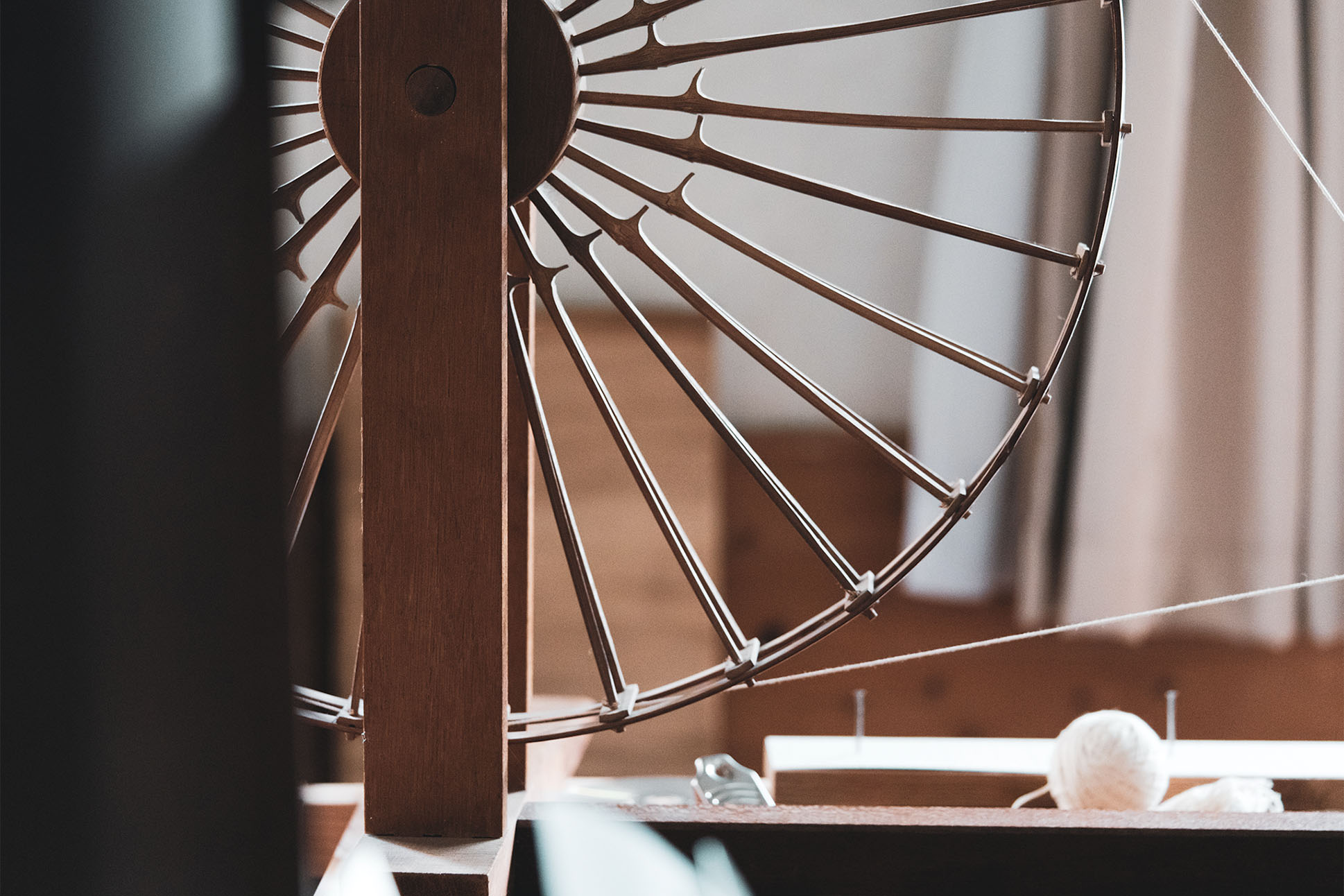

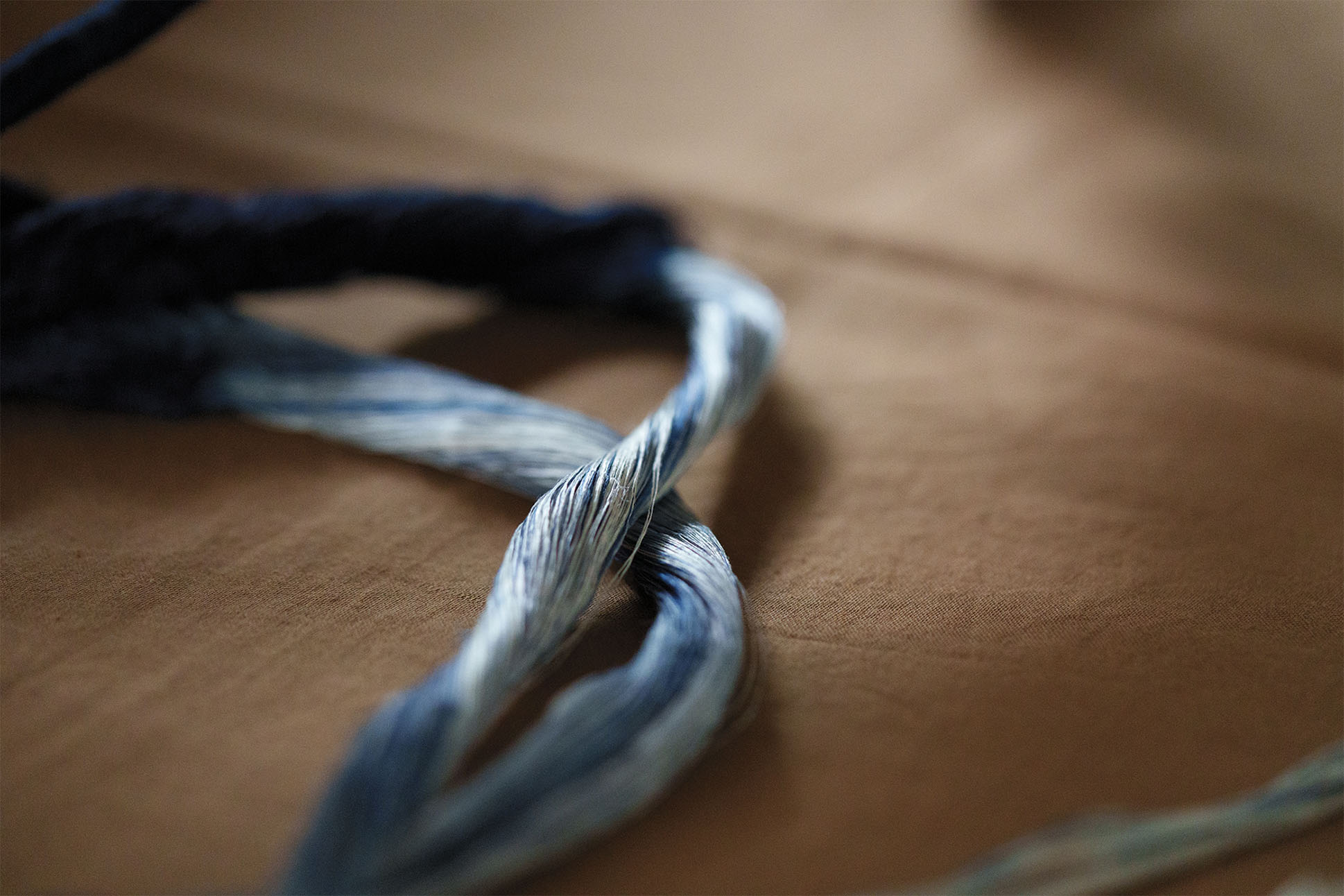
Through the power of fermentation, Ryūkyū indigo produces a vibrant shade of blue dye.
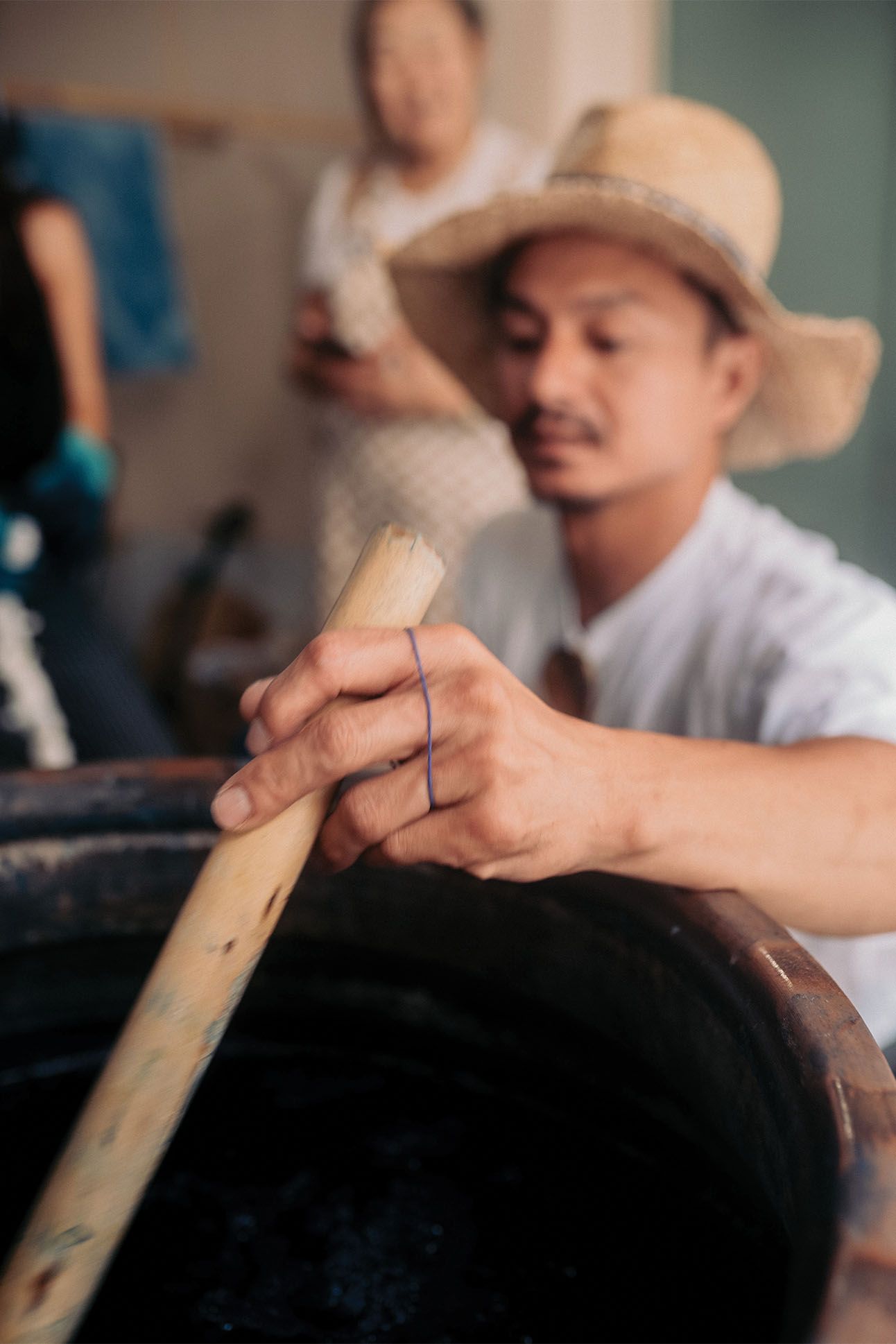
It took travel far from home for Maeshiro’s imagination to be captured by the activity pursued under the family’s roof. “I spent my university years living on the Chiba coast,” he says, recalling his time at Josai International University, east of Tokyo. “There I became immersed in surfing both locally and all over the country, where I encountered aspects of nature, including the colors of sundown and the blue ocean. The blues of surfing and the blues of Ryūkyū-ai came to overlap in my mind.” With the encouragement of his thesis advisor—a fellow native of Okinawa—Maeshiro nurtured his growing interest in his family’s Ryūkyū bigasuri practice, and following graduation he began working in the family atelier alongside his father, Okishige Maeshiro.
Maeshiro had established himself as an independent artisan when, in 2011, at age 30, he developed a congenital spinal disease that left him reliant upon a wheelchair for mobility. Forced to step away from dyeing and weaving work, he focused on developing a brand named “Bigasuri,” which combines Ryūkyū bigasuri and leather, with the aim of introducing Okinawa’s kasuri culture to new audiences.
But Maeshiro’s desire to get back to senshoku never waned. Eventually, after six long years, he enlisted a woodworker to build a loom that he could operate from his wheelchair. “There were other difficulties as I got myself used to working at this new loom,” he says. “But as I handled the threads [of kasuri], my determination to overcome these challenges was strengthened.”
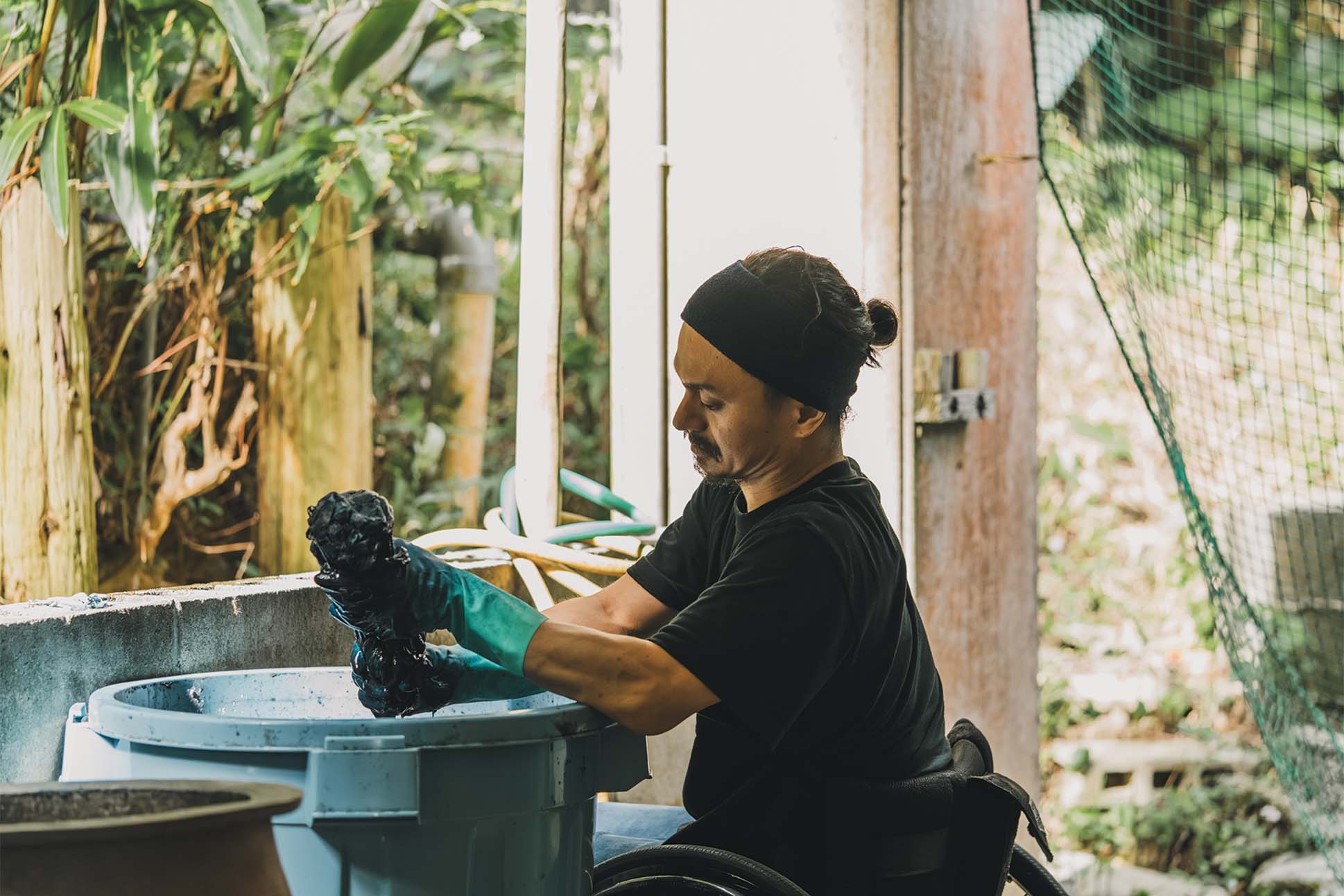


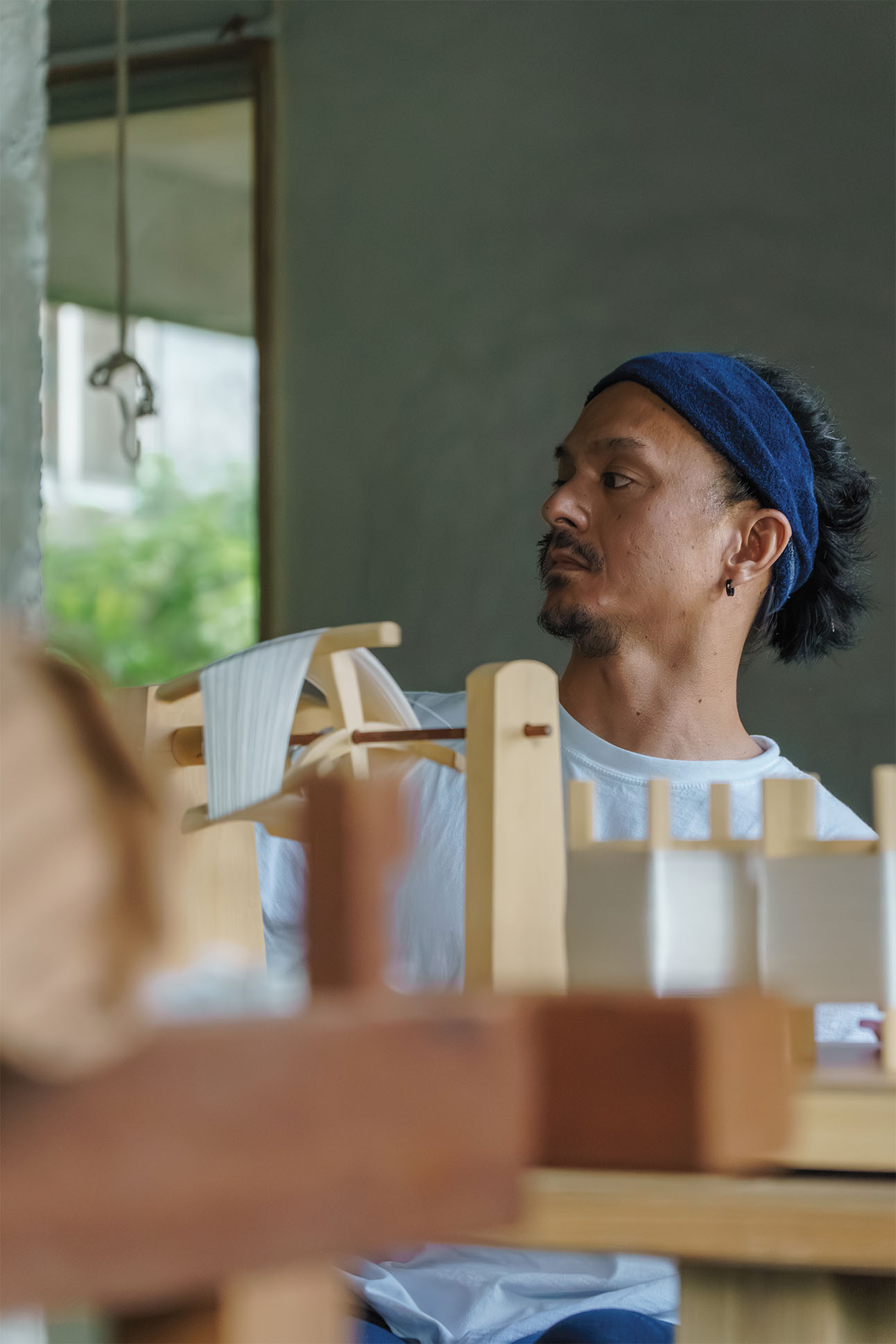

Maeshiro marked his return to the loom with a lofty ambition. “I felt I should give myself some big new objective,” he remembers, “so I set myself the challenge of exhibiting in the art world’s number one city, New York.” Four years later, in 2021, Maeshiro put on a solo show, “Okinawa Blues,” at Tenri Gallery in Manhattan.
For the exhibition, he produced a kasuri stole that takes elements of traditional Ryūkyū kasuri and imbues them with a contemporary spirit. Titled Three Little Birds, the stole depicts an avian trio flying above stripes rendered in a gradient of indigo hues. “This bird motif, called the ‘tuigwa’ in local dialect, is a traditional Okinawan design,” Maeshiro explains. “In homage to the Bob Marley song the piece is named for, I used three of these birds. True to the Ryūkyū bigasuri created by my father and grandfather, I feel my mission is to develop patterns that are unique and also suit the times.”
While he is no longer riding the indigo waves that captivated him as a surfer, Maeshiro continues to find inspiration in surf culture and the ocean, riffing on traditional Ryūkyūan designs to conjure visuals inspired by surfboard fins and surging swell. “Though I’m presently unable to go surfing, it’s as if the hues of the ocean and sky, which change throughout the day, become my color samples as I dye threads for my kasuri,” he says. “It’s these colors that I want to express in cloth.”


